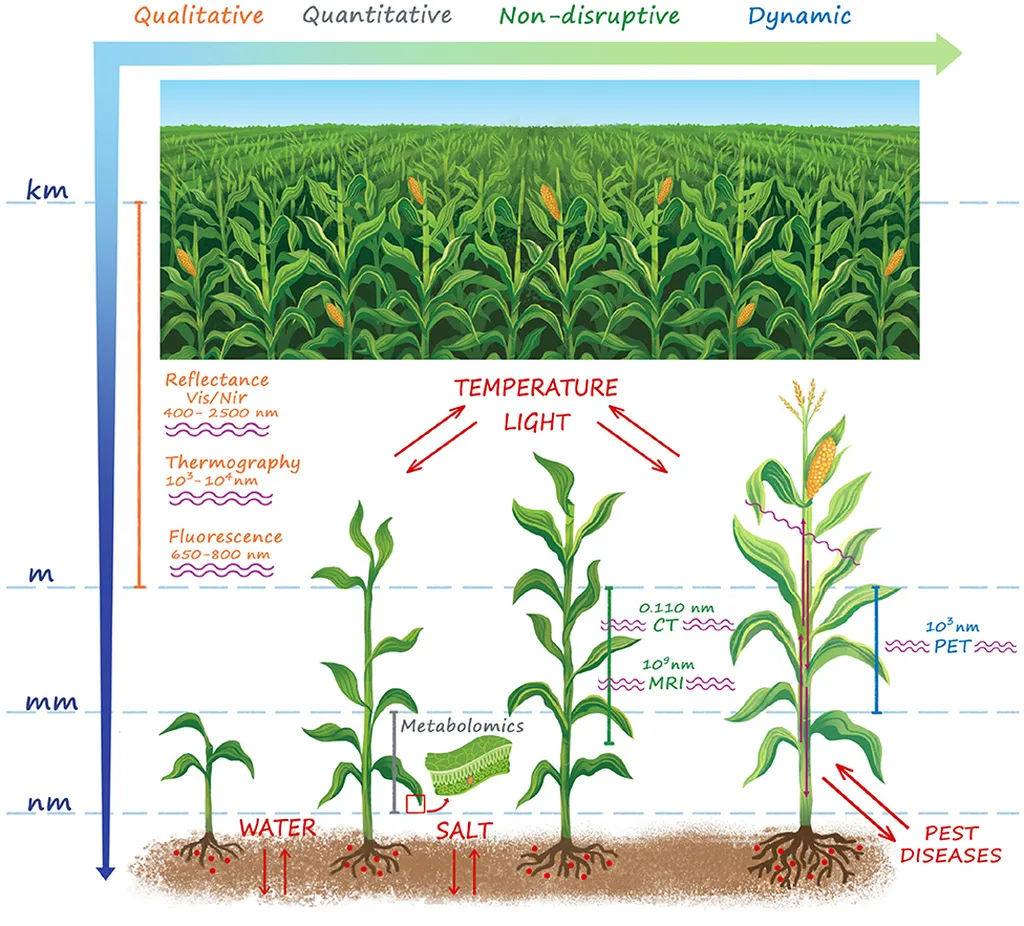In the heart of the Himalayas, a team of researchers has cracked a significant code in plant biology, potentially revolutionizing how we approach crop improvement and, by extension, the energy sector. Umesh Bhati, a scientist at the Studio of Computational Biology & Bioinformatics at the CSIR-Institute of Himalayan Bioresource Technology (CSIR-IHBT) in Palampur, India, has led a groundbreaking study published in the journal ‘Current Plant Biology’ (translated as ‘Current Plant Science’).
Plants, much like humans, respond to stress by altering their gene expression. This process is orchestrated by transcription factors (TFs), which interpret DNA sequences to determine when and where genes are expressed. However, understanding how these TFs work under specific conditions has been a major challenge. Bhati and his team have developed a novel computational framework that deciphers these condition-specific gene regulatory networks (GRNs).
The team leveraged a massive amount of multi-omics data, including ChIP-seq, RNA-seq, and protein-protein interaction data, to build a system of Bayesian causal networks. These networks explain how TFs bind to DNA under diverse conditions in Arabidopsis, a model plant species. The networks were then fed into a Graph Transformer deep learning system, creating models for 110 abiotic stress-related TFs. The result is a tool called CTF-BIND, which can accurately predict TF binding directly from RNA-seq data, bypassing the need for separate ChIP-seq experiments.
“This is a game-changer,” Bhati said. “CTF-BIND achieves an average accuracy of around 93% when tested against extensive experimental data. It’s a cost-effective alternative to ChIP-seq and can accelerate research towards crop improvement strategies.”
The implications for the energy sector are significant. Many bioenergy crops, such as switchgrass and miscanthus, are known to have complex regulatory networks that help them adapt to various environmental stresses. Understanding these networks can lead to the development of more robust and productive energy crops. Moreover, the ability to predict TF binding under specific conditions can aid in the engineering of crops that are more resilient to climate change, ensuring a stable supply of biomass for bioenergy production.
CTF-BIND is not just a theoretical breakthrough; it’s a practical tool. It’s implemented as an interactive, open-access web server and database that captures dynamic shifts in regulatory pathways. This means that researchers and industry professionals can use it to gain insights into plant stress responses and develop strategies to improve crop resilience.
The study is a testament to the power of interdisciplinary research, combining computational biology, bioinformatics, and plant science. It’s also a reminder of the potential that lies in exploring the natural world’s complexities through the lens of advanced technologies.
As we face the challenges of climate change and the need for sustainable energy sources, tools like CTF-BIND could play a pivotal role in shaping our future. They offer a glimpse into a world where science and technology converge to create solutions that are not just innovative but also deeply rooted in the natural world.

